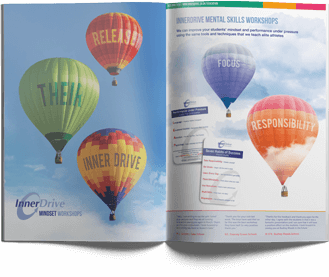This is part 3 of this blog series, check out part one (focusing on rewards) and part two (looking at the impact of fear) for more information on good motivators.
Recently, author Daniel Pink stated that "carrot and sticks are so last century." The problem with rewards is they can hinder intrinsic motivation, and too much fear can lead to stress and anxiety. Is there a better way to motivate someone? This blog looks at a different option: helping your future self.
The Story
In the early 1960s boxer Sonny Liston fought champion Floyd Paterson for the heavyweight title. In one of the most one-sided fights in history, lasting all of 2 minutes, Liston knocked out the champion with a devastating left hook. The re-match, a year later, had the same outcome and lasted only four seconds longer. Sonny Liston was the undoubted heavyweight champion of the world and the dominant boxer of his time. Legendary British boxer Henry Cooper was reported to have refused to meet Liston in the ring, saying that he "wouldn’t even want to meet him walking down the same street."
In 1964 Liston agreed to fight a rookie boxer, Cassius Clay (later to be known as Muhammad Ali). Before the fight, 43 of the 46 ringside reporters tipped Liston to win. Clay surprised everyone by beating the champion and going on to be one of the greatest boxers of all time.
How did he do it? Muhammad Ali was known for training hard. His coach, Angelo Dundee, said, "I never had to ask him to come to the gym. He was always first in and last to leave." Ali himself once famously said, “I hated every minute of training. I said suffer now and live the rest of my life as a champion."
The Science: Act Now For Future You
Was Muhammad Ali tapping into a powerful concept that helped motivate him in his career? Ali didn’t enjoy the act of training, but he knew it would benefit him and help him achieve his dream of being world champion. Psychologists call this ‘identified regulation’. Identified regulation refers to the motivation to do a task that in itself isn’t enjoyable, but may be important to help you achieve your goals in the future.
One way to help improve this is to explain to someone why the task they are doing will help them in the future. Several studies have examined exactly this, especially for tasks that students perceive as boring.
Study 1: Learn a new language – Participants were taught phrases in Chinese in a very boring way. They were divided into three groups. Some were not given any reason for the task; others were told they should try hard because it is what’s expected of them. (In this group, words such as ‘should’, ‘must’, ‘have to’ and ‘ought to’ were emphasised.) The third group were told it would help them in their future career. The result? Those who had the explanation as to why this skill may be useful to them put in much more effort.
Study 2: Maths equations – Students received an uninteresting lesson for 20 minutes. The lesson was designed to be as tedious as possible. Prior to the lesson, the students had been split into two groups; the first was given an explanation as to why this lesson would be useful to them, whereas the second group was not. The results? Those who had been given the rationale were deemed to be more engaged in the lesson, were more motivated and learnt more.
As well as explaining how a particular task can help future career goals, there are other ways of increasing this type of motivation. One such way is doing a task that may be unpleasant now, but will make you feel good in the future. In part 1 we blogged on how some countries pay for blood donors (Russia, China, Germany and America) and others don’t (France, Australia, England and Japan). One country hoping to tap into the concept of ‘Acting Now For Future You’ is Sweden. Instead of paying for donations, they now send a thank you text to the blood donor when their blood is used in an operation. It is thought that people are more encouraged when they know that their actions in the present have made a difference in the future. They also have a stronger sense of self satisfaction. The text message ticks both the boxes.
Practical Considerations
So how can we tap into this motivation? One suggestion would be to provide a (brief) rationale before someone does a task on how said task will help them in the future. This would suggest that we have been doing lesson objectives wrong. It is not the ‘what’ that we should be covering, it is the ‘why’. The research suggest just 3 minutes would be enough.
However, this may not be as easy as it sounds. Some students may be unable to make the connection between what they are being asked to do and how it will benefit them. This may be because they don’t know what they want to do in the future. Also, 30 students may have 30 different visions for the future, so tapping in to each of these for every task would be difficult and time consuming.
Another possible roadblock is that students may not believe in the rationale being given to them. Trust is a big mediator of behaviour. One famous study told participants not to eat the marshmallow placed in front of them. If they could wait for a while, they would be rewarded with two marshmallows. Those that did not trust the person giving them the instructions were only able to wait for 3 minutes before giving in to temptation; whereas, those that trusted the instructor were able to hold out for over 12 minutes. If students don’t believe what they are being told, their motivation will suffer.
Final Thought
This blog series has looked at three different possible ways to motivate someone: rewards, fear or personal future success. Each has pros and cons, and not one size fits all. The best advice we can give is to get to know the person you are trying to motivate, appreciate the complexity of the situation as well as the possible consequences of each different motivator.
For more Growth Mindset tips and resources, check out our Growth Mindset guide page.






